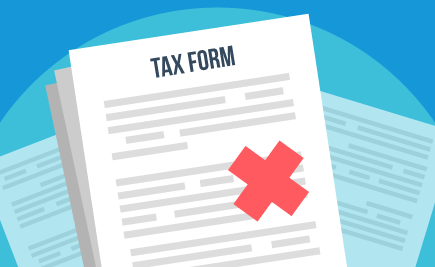To avoid any error or omission, it is best to file your returns with utmost care. However, in case of a genuine error, the I-T department gives you chance to rectify mistakes by filing a revised return.

Filing Income Tax Returns (ITR) is a cumbersome exercise and requires due diligence to avoid any errors. A taxpayer usually is cautious while filing ITRs, but sometimes commits a mistake unintentionally. These mistakes can be related to unclaimed exemptions, wrong income or wrong bank details for refunds. However, the income tax department provides the taxpayer a chance to correct the error, and revise an already filed ITR in case of any genuine mistake.
A revised ITR enables you to undo the error or add a missed entry in your already filled ITR. As per the I-T department’s rules and regulations a revision is allowed only for unintentional mistakes or omissions. Any deliberate attempts to conceal information to save tax outgo can lead to a possible scrutiny from the I-T department with the additional possibility of a fine and even litigation proceedings. Deliberately providing wrong details in an ITR can lead to a possible imprisonment and penal penalty under Section 277 of the I-T Act.
Things To Know Before Filling A Revised ITR
Filing an incomplete ITR, using the wrong form or missing out on essential details are all mistakes best avoided. If you have made any such error unintentionally, then revised ITR is a good way to save yourself from the scrutiny of the I-T department. To file a revised ITR you need to fulfill certain prerequisites. Your original ITR must be filed on or before the due date of filing for the relevant assessment year (AY). Earlier, the option of filing a revised ITR was not available for belated ITRs. From AY 2017-18, however, the I-T department has allowed revision even for belated filed ITRs.
A revised ITR can be filed before the expiry of one year from the end of the relevant assessment year. So for example for ITRs for the AY 2015-16 for which the last date of filling was July 31, 2016, you can file a revised ITR till March 31, 2018. Filing of revised returns is allowed under Section 139(5) of the I-T Act.
Ways To File A Revised ITR
Before you file your revised ITR, ensure that you have with you the date of filing of your original ITR along with the associated acknowledgement number.
Step 1: Login to the official e-filing website of the I-T department by visiting the link https://incometaxindiaefiling.gov.in.
Step 2: In the dashboard, choose the relevant form and assessment year for which you are filing your revised ITR.
Step 3: Open the original excel file which has your original ITR and choose the option of revised return and select Section 139(5) from the drop-down menu.
Step 4: You will be asked to submit the ITR acknowledgement number along with the previous date of filing of the original ITR in the revised form.
Step 5: Make the necessary changes and prepare your fresh ITR with the desired corrections and revisions.
Step 6: Once done click on compute tax and generate the XML file and upload the same.
Step 7: Download the revised ITR-V and verify your revised ITR by sending either a physical copy of the revised ITR to CPC Bangalore or opt or e-verification using Aadhar or OTP.
It is best to take utmost care while filing your original ITR. However, in case of any mistake, you still have a chance to rectify it.
BankBazaar.com is a leading online marketplace in India that helps consumers compare and apply for Credit Card, Personal Loan, Home Loan, Car Loan, and insurance.
